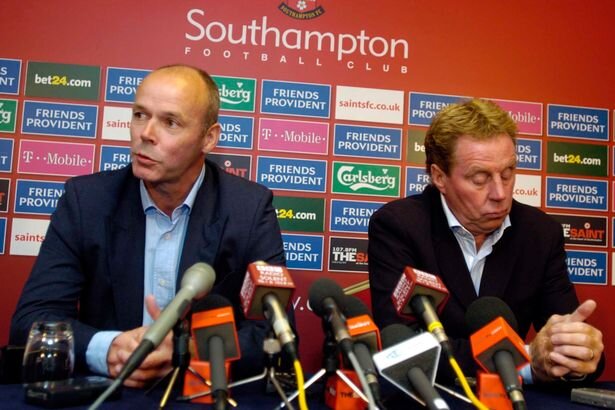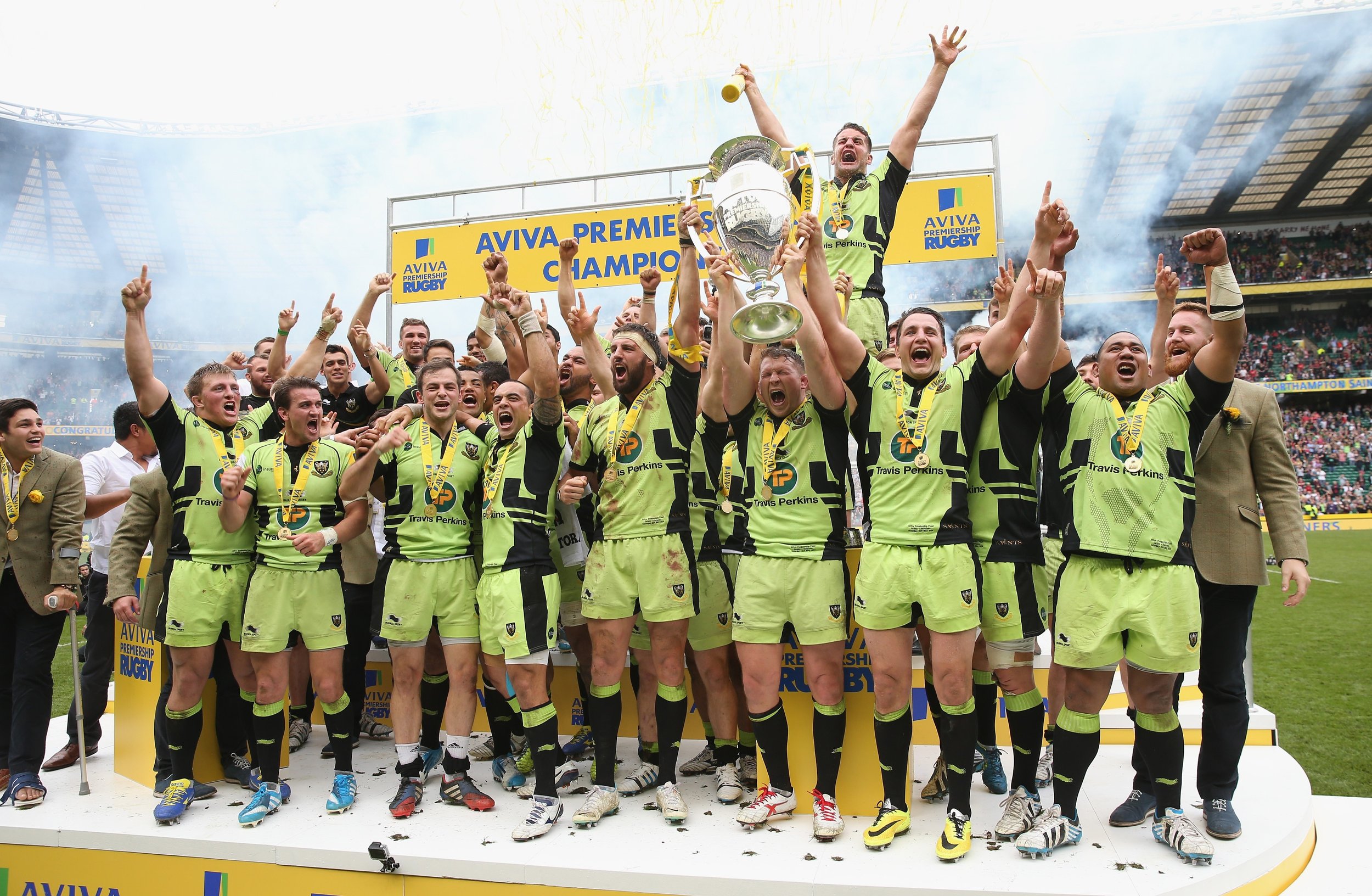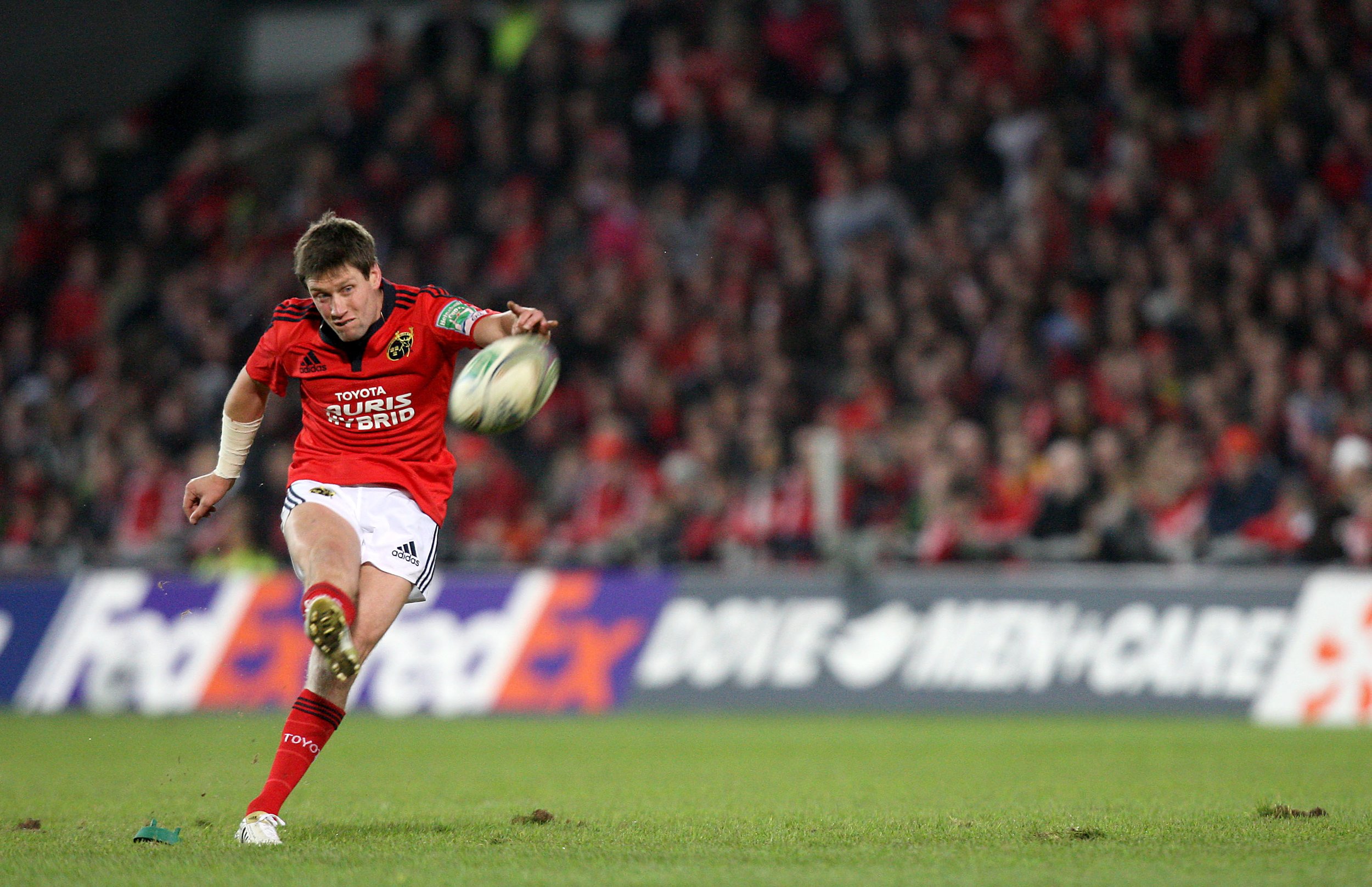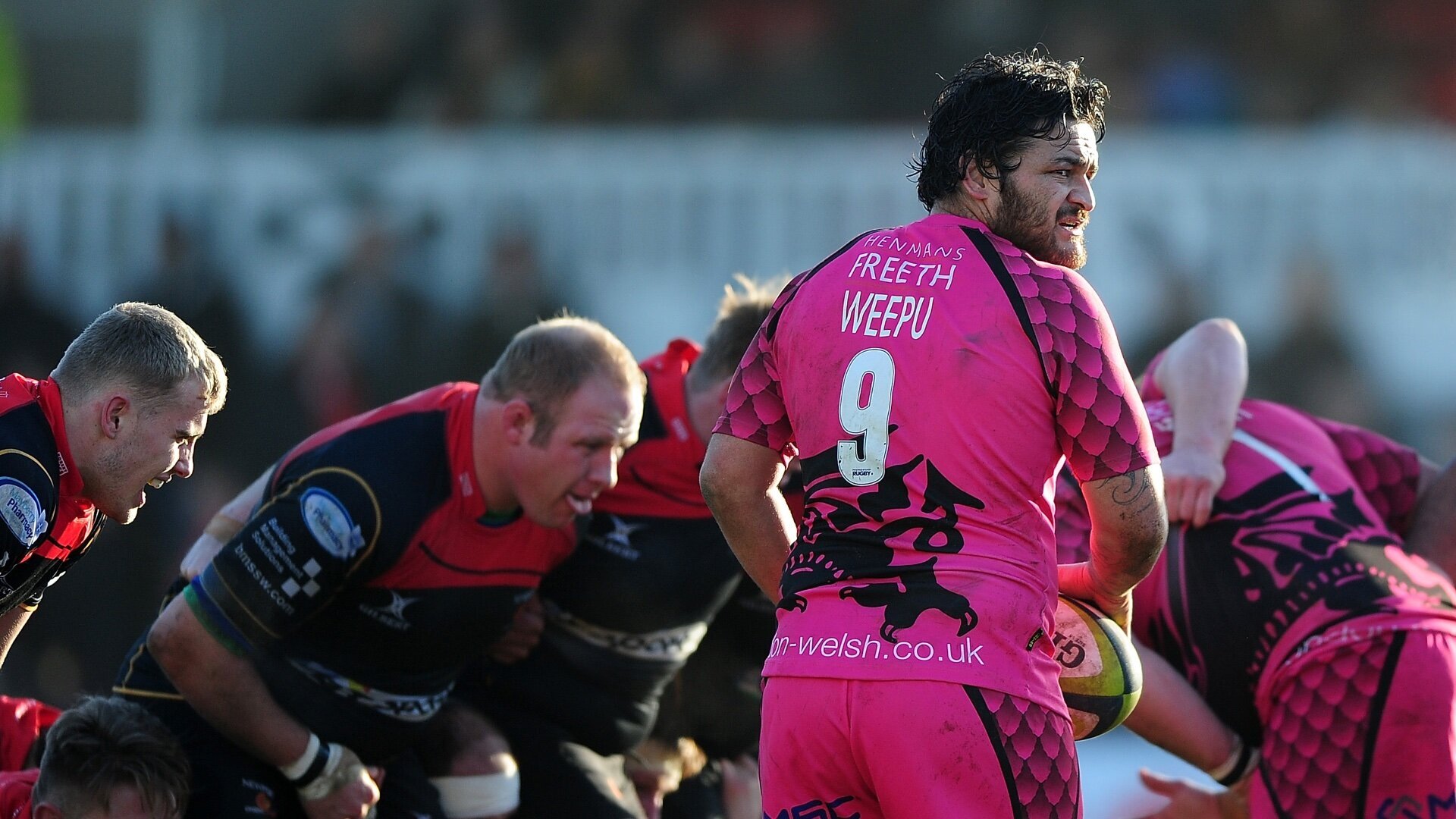Remembering Sir Clive Woodward’s infamous spell in football with Southampton FC
Sir Clive Woodward on his unveiling as Technical Director in June 2005 at Southampton FC alongside manager Harry Redknapp
Credit: Getty Images
There have been a number of legends who have tried their hand at another sport, all to varying degrees of success.
Michael Jordan, possibly the greatest player to grace a basketball court, retired in 1993 to pursue a baseball career when he signed for the Chicago White Sox.
Ellyse Perry has represented Australia 238 times in all forms of cricket but also has 18 caps for the Socceroos in football.
Former Sheffield United, Birmingham City and Peterborough midfielder Curtis Woodhouse only played football part time from 2006 onwards as he enjoyed a successful boxing career, winning the British light-welterweight title in 2014.
When 2003 Rugby World Cup winning coach Sir Clive Woodward announced that he was to switch to football management in 2005, you’d be forgiven for thinking that it may work out.
If he could harness the same cross-sport methods he pioneered with England, such as his undoubted motivational skills, physical fitness techniques and analytical mind, it wasn’t beyond the realms of possibility that it could work out in football.
However, it was a tough period that lasted just a year, but would things have been different if he made the switch today? The Flanker looks back on Sir Clive’s sojourn in football.
Dreadful 2005 Lions Tour the beginning of the end
Woodward was heavily criticised in 2005 for the size of his playing squad, the management structure he appointed and decision to split into two different teams
Credit: WILLIAM WEST/Getty Images
Before his move to Saints, Woodward had the privilege to lead the Lions in their tour of New Zealand in 2005.
It had the air of strangeness even at the beginning with the players given iPods loaded with specially chosen songs, including the Lions’ own new anthem which was cringe-inducingly named ‘The Power of Four’.
Woodward expected everyone to learn the lyrics when they arrived in New Zealand, with Head of Media Relations Alastair Campbell conducting regular team-building sessions with the players.
Woodward had previoulsy said there was “no way you can dissect a tour party into two separate groups” but ended up doing exactly that as the squad was split into a midweek team and a test team.
It ended up being a nightmare tour “gripped by paranoia” according to the Guardian. A fence was constructed around the Lions training pitch and visiting school children kicked out the ground before one session.
Lewis Moody said of Woodward: “Clive treated it like a business, a well-oiled machine but old school methods, at least to a degree, are essential on a Lions tour.”
Ahead of the second test, Alastair Campbell was allowed to give a team talk where he questioned the Lions players desire, with Paul O’Connell saying he wanted to “knock him out” as a result.
In total, 44 players, 28 support staff, including 10 coaches, a legal adviser and a former referee were in the touring party with all the mixed messages causing massive confusion.
It ended in a 3-0 Test series loss while the midweek side went undefeated, even nicknaming themselves “The Midweek Massive” as they felt disgruntled at the lack of opportunities in the main team.
For Woodward, the innovative coach whose simplistic mantra of Thinking Correctly Under Pressure (T-CUP) had delivered a World Cup, was starting to over-complicate things right when his career was headed towards a massive u-turn.
Southampton, Simon Clifford and '“Mad Professor” tag
Following his appointment in the summer of 2005, Woodward’s role was painstakingly set out to ensure that he wouldn’t step on Southampton manager Harry Redknapp’s toes.
With a job title of Technical Director, he would initially work with the Saints academy to improve the fitness of the players as then chairman Rupert Lowe had been courting Woodward for years previously.
Woodward would also attempt to implement his innovative sports science methods that helped lead England to the 2003 World Cup.
At the time, Sir Clive was able to work with excellent Southampton youth prospects such as Gareth Bale, Nathan Dyer, David McGoldrick, Theo Walcott and Adam Lallana while he made the first few tentative steps in football.
Football training methods were not something alien to Woodward, who had already been picking up tips from other disciplines when still in the England job.
As England manager, he hired gymnasts to improve players' flexibility and darts players to coach line-out throwers while he was among the pioneers of ProZone performance analysis.
He would use cricket slip-catching machines to sharpen reactions and travelled to Denver look at the Broncos defensive patterns in the NFL.
One of his appointments was Simon Clifford, who Woodward spotted after reading an article on his Brazilian soccer schools.
His role was Head of Sports Science, which he juggled with being the owner of non-league side Garforth Town.
Initially, according to the Guardian, Clifford “won praise from some of Southampton's younger players for his skills-based training sessions but his outspoken views caused resentment among members of the backroom coaching staff.”
A series of newspaper articles, in which he challenged the traditional training methods in football, rubbed a lot of coaches at the club up the wrong way.
Clifford questioned why footballers did not train for up to five or six hours a day, starting at 4am like swimmers and boxers, and said they did not need as much time off in the summer.
Within two months Clifford was in and out the door, with the loss of his right hand man showing developing cracks between the more old school staff at the club and the “Mad Professor”, as Woodward was nicknamed, that were beginning to widen.
When quizzed on the left field appointment and ultimate departure Redknapp said: “It is nothing to do with me. I don’t really know about it.
“We are always open to learning but it's easy to come in and say they should train four times a day, but you are not going to get senior players in - you have got to prepare for a Saturday.
“Maybe Alex Ferguson, Arsène Wenger and Jose Mourinho are all fools; maybe they don't know what they are doing and that's the problem.
“Maybe the managers of Real Madrid and Barcelona and everyone else are all idiots; maybe Simon is the only man who knows what we should all be doing.
"I let him get on with it. He came and took a group of kids; I watched what he did and there was nothing that was any different to what I've ever seen anywhere else. There was nothing wrong with what he was doing; it was OK.
“I never offered an opinion about him [Clifford] to anybody; he wasn't my department at all.
“Other people brought him in; other people paid his wages. I wish him well. He seemed a decent enough guy to me; I didn't have any problems with him. I've got enough on my plate worrying about the results of the first team.”
Sir Clive Woodward watches a 16-year-old Gareth Bale training during his time at Southampton
Credit: Getty Images
Woodward also face a battle when bringing in South African vision awareness coach Dr Sherylle Calder who had worked with the RFU and the England national team during his tenure.
Again, it was met with opposition by coaches at the club, with Redknapp once again remarking: “Vision coaches are not for me. I am not interested.”
This was despite the former South African hockey international Calder also working with as well as the Australian cricket team, the New Zealand All Blacks and one of the America's Cup sailing teams.
Redknapp, departure and revisionism
Woodward would eventually be offered the top jobs at Wycombe and MK Dons during his time at Southampton, turning them both down.
His time at the Saints was, allegedly, hampered by friction between himself and then manager Harry Redknapp, even during pre-season.
Forced to deny a rift, the former West Ham, Portsmouth and Spurs gaffer said in July 2005: “I don’t know where the story has come from but it’s rubbish and it does me no favours at all.
“I’m fed up about reading all this stuff about Clive Woodward and that I’m going to answer to him. It’s embarrassing. I’ve spoken to him again and he said he wants to come in and sit and watch and learn.
“Then suddenly there’s a headline saying ‘Harry must obey Sir Clive’. It’s rubbish. And it’s nonsense to say I’m going to walk out. If I wanted to do that I would have gone in the summer.”
Despite the unrest, on the pitch their early season form was successful.
After relegation from the Premier League, Saints took 10 points from their first five Championship games. However, Redknapp sensationally left the club in 12th position to return to his former club Portsmouth in December.
Scot George Burley came in, with Woodward promoted to Director of Football in the process. Burley was the anthises of Redknapp as he was “keen to work” with Sir Clive and embrace his vision and ideas.
Chairman Rupert Lowe watches on in September 2005 as Sir Clive Woodward and Harry Redknapp put on display of unity
Credit: Nick Potts/PA Images via Getty
On his appointment, the former Ipswich and Hearts coach said: “Sir Clive has been a world class coach in a different sport but at the end of the day I think with any football club it's a team.
"Being able to work with Sir Clive can only help me as far as improving my outlook and helping Southampton. I'm looking forward to working, I think, in a very good team."
Woodward played a hands on role in the construction of their new state of the art training facility, continued to study for his UEFA coaching badges and became more and more embedded in football.
He still had his run-ins, including one with potential investor Leon Crouch that made headlines, but he seemed to remain good to his word and saw his long-term future in soccer.
Just when it looked like the whole setup was falling into place, with Burley hand picked by Woodward as part of a clearout which saw four backroom staff members removed as he swung the axe, long-time ally Rupert Lowe also departed the club.
After Southampton failed to reach the playoffs, Lowe shuffled off into the sunset during June 2006, with Sir Clive following shortly after in the August.
Woodward found himself increasingly marginalised at St Mary's with Lowe gone, choosing to take up a new role as Director of Elite Performance for the British Olympic Association and founding his own sports consultancy business.
Looking back on the sorry episode, you do feel as if it happened 10 years too early. Coaches and managers in all sports are always casting envious eyes at other discplines, keen to give their players the extra one percent.
Eddie Jones visited Pep Guardiola during his time at Bayern Munich in an attempt to widen his knowledge, with Guardiola himself even employing former Spain international water polo player Manuel Estiarte as part of his staff at Man City.
Liverpool hired specialist throw-in coach Thomas Grønnemark in 2018, who represented Denmark in bobsled, to work with the first team on improving their technique and range.
This marginal gain was something Sir Clive stressed the importance of during his time at Southampton, pouring over reams of data on how quick restarts can lead to success.
If he suggested such an appointment back in 2005, Redknapp would have probably laughed him out the door.
All in all, it feels like wrong place, wrong time for Woodward and football with his efforts rebuffed by those not ready to fully embrace different ideas.
One thing is for certain, how good would it have been to eavesdrop on Redknapp and Woodward discuss the positives of a flat back four or the tactical benefits of a Garryowen?






















